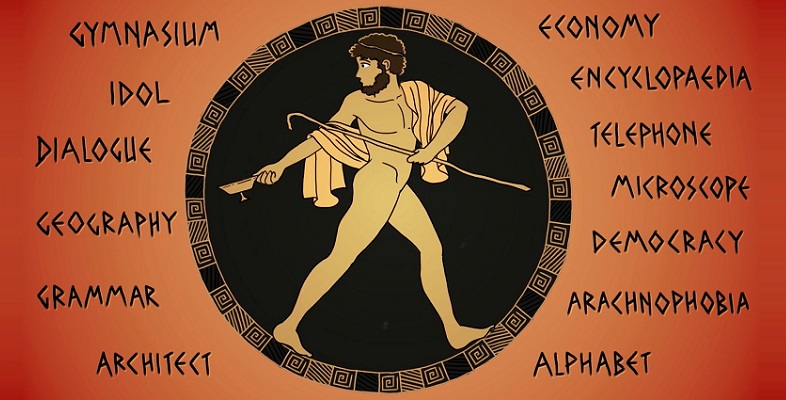8 Plato's Timaeus
Knowledge of Greek numbers equips you to understand the opening words of Plato’s dialogue Timaeus, which gives an account of the structure and origins of the cosmos (κόσμος, which means, among other things, ‘the universe’). It is also one of the sources for the myth of Atlantis.
Activity 11 Plato's Timaeus
Plato’s dialogues are usually laid out like plays, starting with the names of the speakers. Here are the participants in Timaeus. What are their names?
- ΣΩΚΡΑΤΗΣ
- ΤΙΜΑΙΟΣ
- ΈΡΜΟΚΡΑΤΗΣ
- ΚΡΙΤΙΑΣ
Discussion
The participants are Socrates, Timaios (often spelled ‘Timaeus’), Hermocrates and Critias. Socrates is the central figure in most Platonic dialogues, although he is unusually quiet in Timaeus. Hermocrates was a general from Syracuse in Sicily, who played a prominent part in defeating the Athenian attempt to gain control of the island between 415 and 413 BCE during the Peloponnesian War. Critias is probably an older relative of Plato’s. Timaios, the main speaker, is not well attested outside this dialogue and may be Plato’s invention.
After the list of characters, the dialogue begins. The speaker is identified by a two-letter abbreviation in capital letters. Can you translate the opening words?
ΣΩ: εἷς, δύο, τρεῖς …
Discussion
SO[CRATES]: ‘one, two, three …’
Here Socrates notes the arrival of the three participants in the dialogue. He goes on to wonder what has happened to a fourth, unnamed companion. This scene-setting is a reminder that philosophy in the works of Plato is not a solitary activity, but a shared enterprise to be undertaken in conversation with others.
